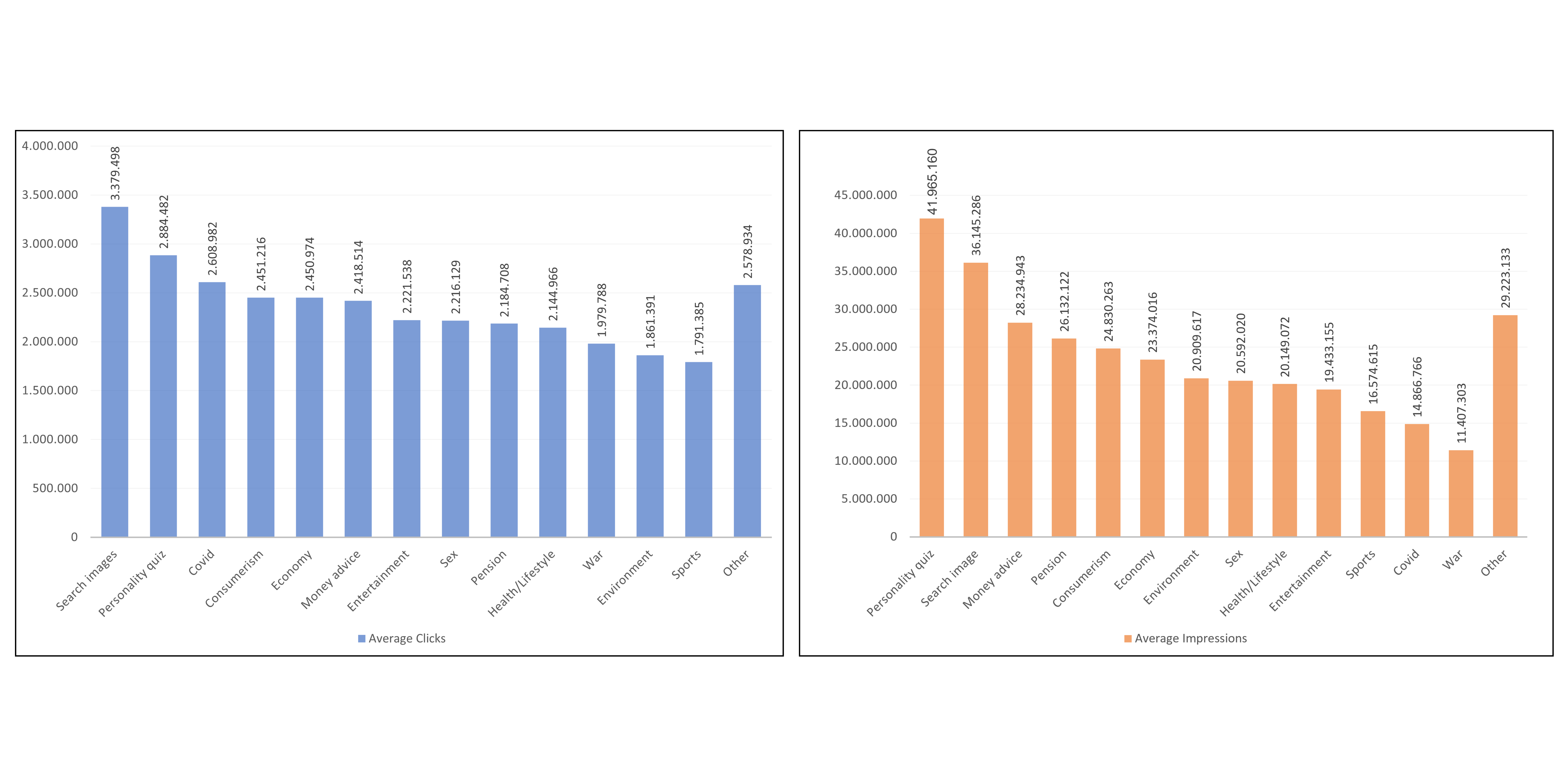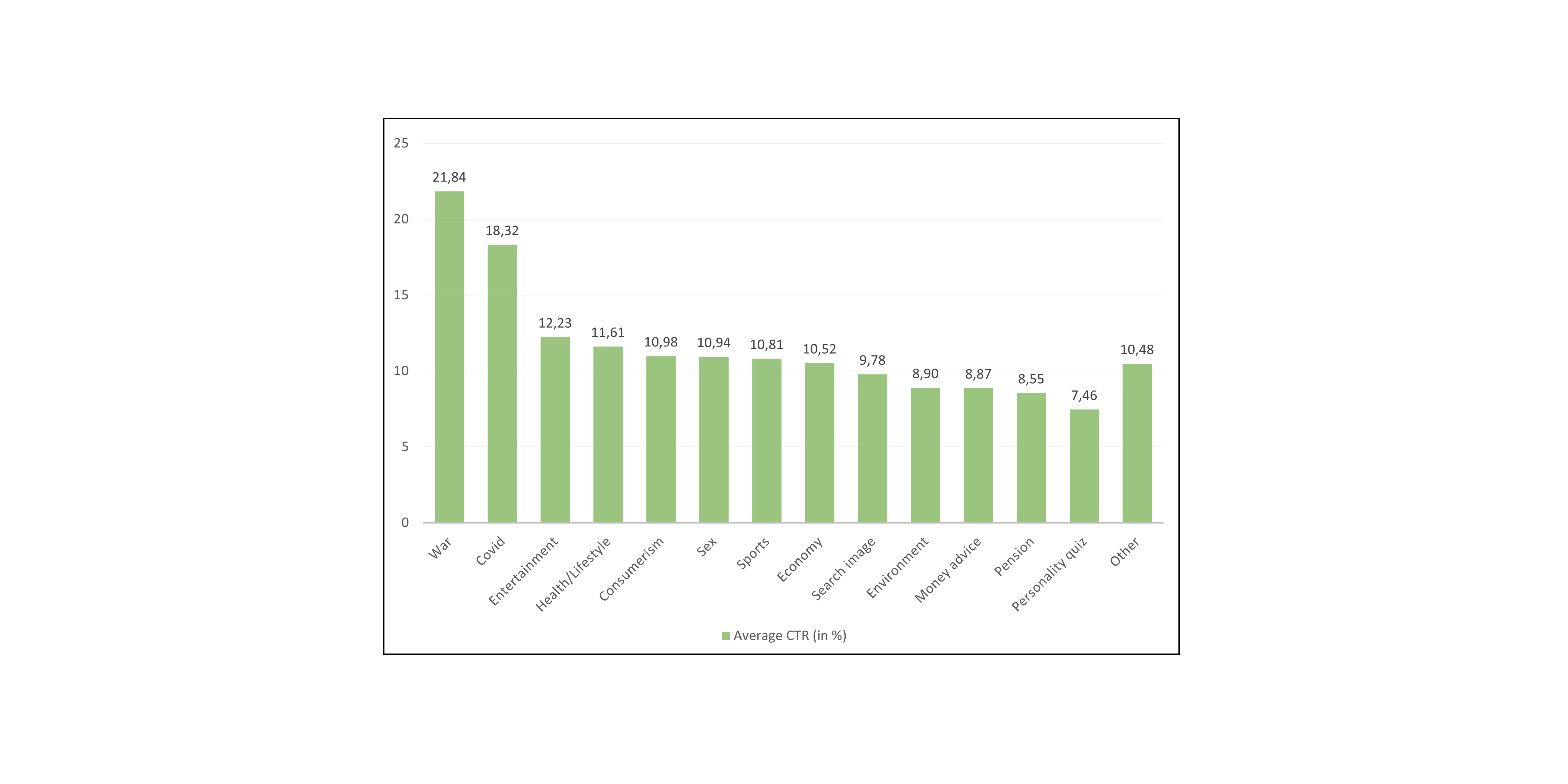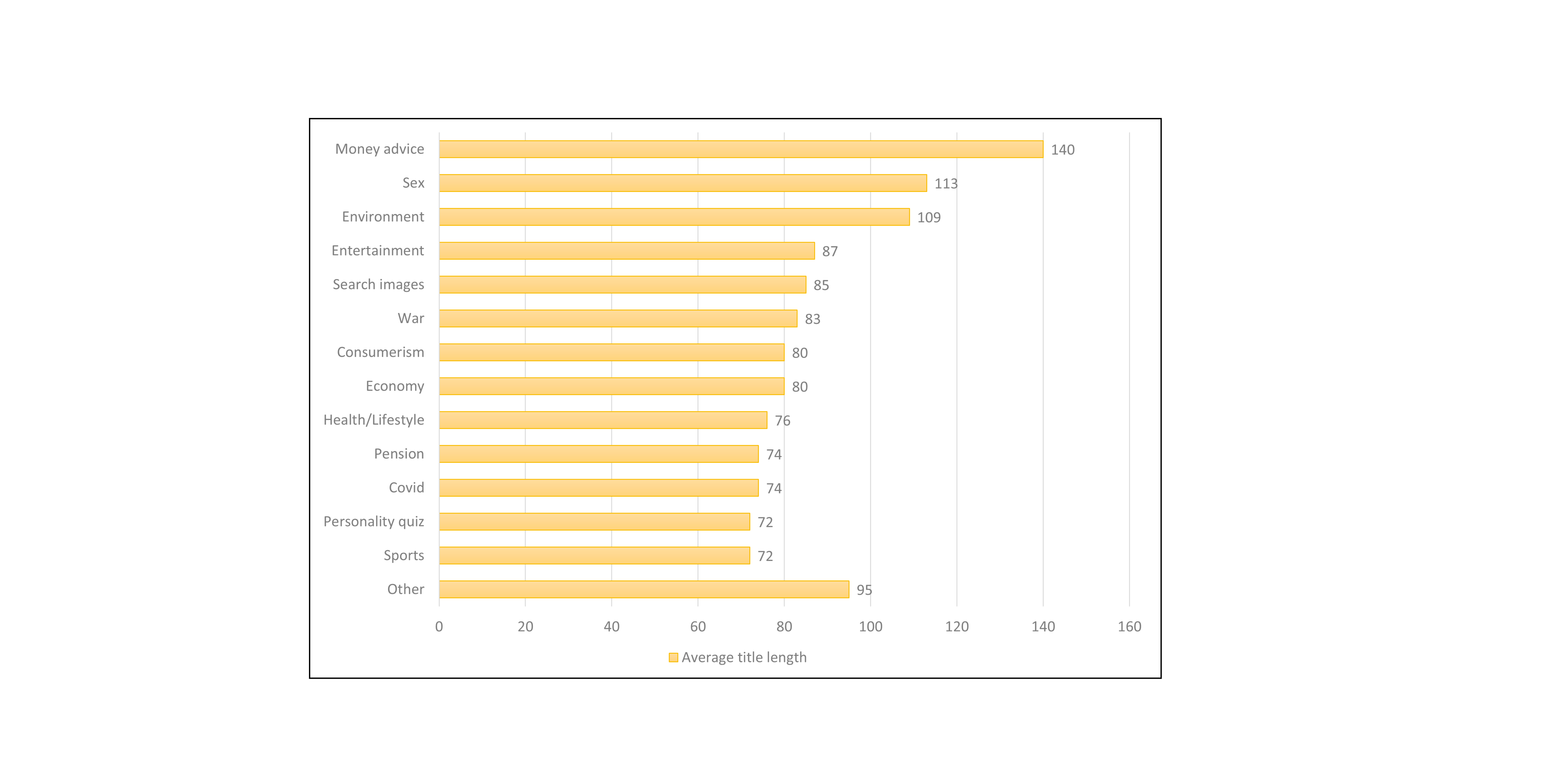What Defines a Top-Ranking Article on Google Discover?
5. June 2023In this analysis, we examine Google Discover’s top 100 articles of 2022 and provide valuable insights on how to optimize content for better performance on the platform. By studying the trends and patterns of the articles that made it to the top, we can provide actionable tips for those looking to increase their visibility on Google Discover. Who knows, maybe 2023’s top 100 will include you.
Let’s start off with the basics: What exactly is Google Discover? Google Discover acts as a personalized feed that is customized to appeal to an individual reader’s interests. Say, for example, your favorite soccer team is Borussia Dortmund. Google’s automated system would eventually notice that you read numerous articles on this team and would therefore suggest articles on soccer and Borussia Dortmund on your own Discover feed.
What data did we use for this analysis and where did it come from? Well, that’s easy – We simply looked at the articles that ranked within the top 100 in 2022, sorted by their number of clicks. Next, we broke down the articles’ individual statistics by different factors, like their number of impressions, CTRs, title length, and others. All the data was taken directly from the Trisolute News Dashboard.
One last thing before we start: Since Discover is such a personalized application and we want to protect our publishers’ data, we will refrain from sharing identifying information about the publishers and titles of the articles. But don’t worry, we were still able to pull large amounts of interesting data to share. Let’s have a look!
What were the top 100 articles about?
To start this analysis off, let’s break down the main topics of the top 100 Google Discover articles to get a better understanding of what seems to work particularly well. We chose to break the articles down into 14 categories. The distribution of how many articles thematized which category can be seen in the following image:
Let’s quickly go through each category and explain what kinds of articles they include:
– Entertainment: Articles about celebrities and people of interest
– Consumerism: Articles about money issues concerning households (e.g. saving energy or gas)
– Money advice: Articles about how to best handle money issues
– Search image: Articles with an image that contains an optical illusion and you have to search for a particular shape or object
– Pension: Articles about the topic pension
– Economy: Articles about economical issues (e.g. price increases)
– Sex: Articles with sexual connotations in their title
– Personality quiz: Articles with a quiz determining the reader’s personality traits
– Health/Lifestyle: Articles with advice or information on a healthier lifestyle
– War: Articles about the Russia-Ukraine-conflict
– Covid: Articles about the Covid-19-pandemic
– Environment: Articles about environmental issues
– Sports: Articles related to sports
– Other: Articles that fit neither of the categories above
This categorization of the top 100 articles are the perfect foundation for some more analyses, so let’s dive into the data just a little deeper:
What were some characteristics of the top 100 articles?
To determine what worked best on Google Discover in 2022, we should not forget about the most fundamental SEO-factors – clicks, title length, the lot. Based on the categories you just learned about we did some analyzing on those and found out some quite interesting information.
Average clicks, impressions and CTRs
Before we look at the data, we want do give a quick rundown on what those terms mean exactly. Clicks describe how many times the article was visited by clicking on its link. Impressions mean the number of times an article was presented by Google, or rather how many times that article could be seen on Discover. Lastly, the CTR or Click-Through-Rate tells you how often people actually clicked on the article when it was displayed to them on Discover. The formula to calculate the CTR is easy: You simply have to divide the number of clicks by the number of impressions and voilà! A quick example: If your article has 5 clicks and 100 impressions, you get 5/100 = 0.05. The CTR for this article would therefore be 5%.
Here’s what we found for the average clicks and impressions per category:
The category with the most clicks by quite a lot were search images, followed by personality quizzes – Readers on Discover seem to like to entertain themselves with puzzles and quizzes the most. These two categories also lead the ranking for average impressions, only that personality quizzes were slightly more present on Discover than search images.
The least clicks could be generated for the category sports, and the category war had the least impressions.
Now that we have the two components for calculating the average CTR for each category, why not have a look at that as well:
When looking at the CTR, the picture shifts quite a bit from the one the average clicks and impressions conveyed. Here, the articles on the Russia-Ukraine war had the highest CTR with 21,84%, followed by articles that were about the Covid-19 pandemic with 18,32%. The top categories for clicks and impressions, search images and personality quizzes, are situated in the midfield and at the end when it comes to CTR.
According to Google, the CTR can be an indicator on whether readers find your article relevant and interesting.
Average title length
Let’s now have a look at one more SEO-basic: The length of an article’s title. When looking for a keyword, or, in this case, scrolling through your discover feed, you see each article as a link you can click on before reading the whole thing. This link displays the article’s title, even before clicking on it. Though it’s not always 100% accurate, Google tends to clip these titles at around 60-65 characters (letters, spaces and numbers).
Here’s another interesting suggestion about headlines in Discover. SEO news expert Barry Adams from Polemic Digital has come across article headlines in Discover that don’t match the more typical headline types and believes Google occasionally picks headlines for Discover from an article’s Open Graph meta tags, which are used for social media. As Adams discusses in The 5 Article Headlines Google Cares About, while you are optimizing the Open Graph tags for social, keep in mind that they may end up also displaying on Discover.
Why not have a look at how long the titles of the top 100 articles on 2022’s Discover were:
Articles on the topic of money advice had the longest titles by quite a lot: 140 characters are more than double of what Google would usually show on the Discover-feed. Looking back at the other stats though, that didn’t seem to have impacted those articles negatively. The categories sports and personality quizzes had the shortest titles on average – though still both above the display limit of 60-65 characters. By looking at this in detail we noticed that the position of relevant keywords/entities seems to be a deciding factor which we want to analyze further in the future.
Takeaways
Finally, let’s look at a quick summary on what we were able to find out from the given data:
- Search images generated with about 3.4 million clicks the most on average per article.
- The most impressions on Discover were generated by personality quizzes, with about 42 million on average per article.
- Articles on the Russia-Ukraine war generated the highest CTR on average (21,84%).
- The standing of the articles shifts immensely when looking at the CTR instead of the clicks.
- The articles with the longest titles were on money-advice with 140 characters on average. Generally longer titles do not seem to negatively influence traffic.
- In general it seems like articles with interactive puzzles or quizzes work particularly well with readers on Google Discover. Besides that, articles on current affairs and articles on personal finance seem to be quite popular as well.
Not yet part of the Trisolute News Dashboard family? Request your FREE demo today and find out how your articles rank on Google Discover, Google News and the SERPs!



